Are you looking to explore the history of Amman through the ages? There are a number of historical destinations in Amman including the time-honored buildings, monuments, palaces, and parks where you can learn about the glorious past of Amman. The presence of these historical sites and museums will take you on a walk through Amman ‘s rich history.
If you are willing to have an in-depth historical information about Amman, we recommend that you take a wonderful guided tour to cover the major historical attractions. Also, check the opening and closing time for each so that you can organize your time. Make sure that you go through the complete list of historical places in Amman for a great trip!
Top Historical Places in Amman
Let's witness the history of Amman with these top historical places - monuments and landmarks:
-
Roman Amphitheatre
(22 Votes)This beautifully restored ancient second-century Roman amphitheatre that seats 6000 people is an easily accessible landmark. It was built back in the day when Amman was known as Philadelphia. Which is one of the three Roman structures in the neighborhood, the other two being the Odeon and the Nymphaeum. It is built facing the north so that spectators would not have to suffer the Sun. End the fu...Read more -
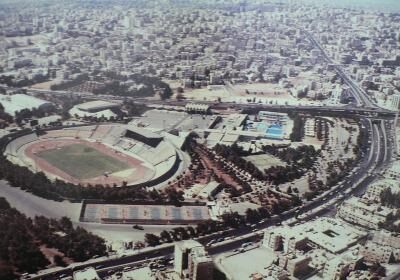 The area cradled between the Royal Hashemite Court, the Hashemite Plaza and the Citadel is the oldest part of the city. This was the section inhabited by people during the Neolithic Age. The Seven Hills of the cities around this neighborhood in a rough manner and used to provide a natural perimeter and border security to it. For tourists, and addition to the historical aspect, it also serves as...Read more
The area cradled between the Royal Hashemite Court, the Hashemite Plaza and the Citadel is the oldest part of the city. This was the section inhabited by people during the Neolithic Age. The Seven Hills of the cities around this neighborhood in a rough manner and used to provide a natural perimeter and border security to it. For tourists, and addition to the historical aspect, it also serves as...Read more -
Qasr Al-kharanah
(81 Votes)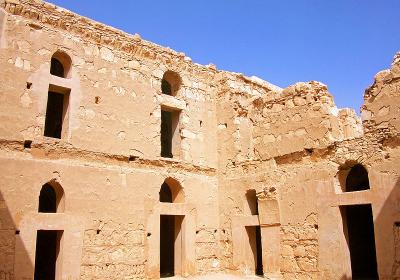 Out in the arid plains outside of Amman you will find many stand-alone castles, structures with a mystique unlike any other. This is one of the more famous ones, and also one of the most photogenic. It's not certain what the original purpose of this castle used to be and even though it looks huge it might not have been used as a defensive establishment. In the courtyard, a mess of arches and wi...Read more
Out in the arid plains outside of Amman you will find many stand-alone castles, structures with a mystique unlike any other. This is one of the more famous ones, and also one of the most photogenic. It's not certain what the original purpose of this castle used to be and even though it looks huge it might not have been used as a defensive establishment. In the courtyard, a mess of arches and wi...Read more -
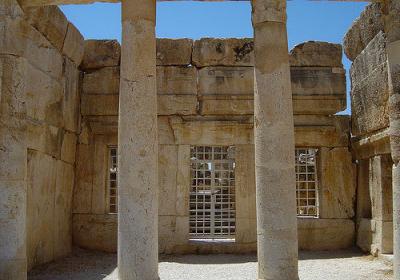 The ruins of this unfinished 200 BCE Hellenistic castle lie to the west of Amman close to the village of Iraq al-amir. Next to the castle are some old burial caves. It is thought that once upon a time a reflecting pool surrounded the castle. It is made of stone and is two stories tall. It is notable for being constructed out of large single blocks of stone, some of which bear the sculpted figur...Read more
The ruins of this unfinished 200 BCE Hellenistic castle lie to the west of Amman close to the village of Iraq al-amir. Next to the castle are some old burial caves. It is thought that once upon a time a reflecting pool surrounded the castle. It is made of stone and is two stories tall. It is notable for being constructed out of large single blocks of stone, some of which bear the sculpted figur...Read more -
The Martyrs' Memorial And Museum
(51 Votes) This is a simple museum that follows Jordan's history in the 20th century, focusing on military history from the Arabian Revolt in 1916 to the Arab-Israeli wars. Documents, weapons, clothing and vehicles make up the bulk of the collection here. There are also Turkish uniforms, British radio equipment, arms from the USA, and camel saddles. However, it is meant to serve more as a commemoration of...Read more
This is a simple museum that follows Jordan's history in the 20th century, focusing on military history from the Arabian Revolt in 1916 to the Arab-Israeli wars. Documents, weapons, clothing and vehicles make up the bulk of the collection here. There are also Turkish uniforms, British radio equipment, arms from the USA, and camel saddles. However, it is meant to serve more as a commemoration of...Read more -
Rujm Al Malfouf
(34 Votes)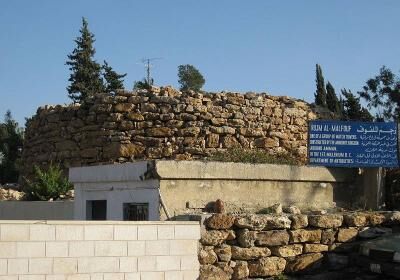 This is probably not the most interesting archaeological site you will visit in your life but it is worth checking out if you're in the city. For one thing, it is more than 2,500 years old and was built in the Iron Age by the Ammonite Kingdom, and later it was used by the Romans. It is basically around 18 feet tall and in its heyday must have had at least two or three floors. It is thought that...Read more
This is probably not the most interesting archaeological site you will visit in your life but it is worth checking out if you're in the city. For one thing, it is more than 2,500 years old and was built in the Iron Age by the Ammonite Kingdom, and later it was used by the Romans. It is basically around 18 feet tall and in its heyday must have had at least two or three floors. It is thought that...Read more -
Umm Qyas Archaeological Site
(1 Vote)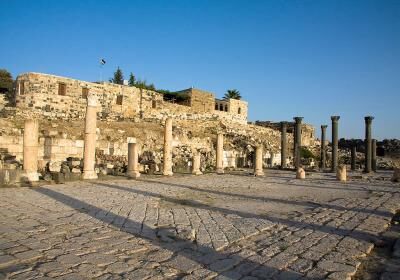 While exploring the nukes and crannies of the historic city of Jordan, you and your companions can think of planning a journey to the spot of Umm Qays Archaeological Site. The very place used to be known as Gadara in the ancient times. Once this spot was an eminent place where philosophers and classical poets used to unite to practice their intellect. The eminent Roman figure Theodorus also vis...Read more
While exploring the nukes and crannies of the historic city of Jordan, you and your companions can think of planning a journey to the spot of Umm Qays Archaeological Site. The very place used to be known as Gadara in the ancient times. Once this spot was an eminent place where philosophers and classical poets used to unite to practice their intellect. The eminent Roman figure Theodorus also vis...Read more